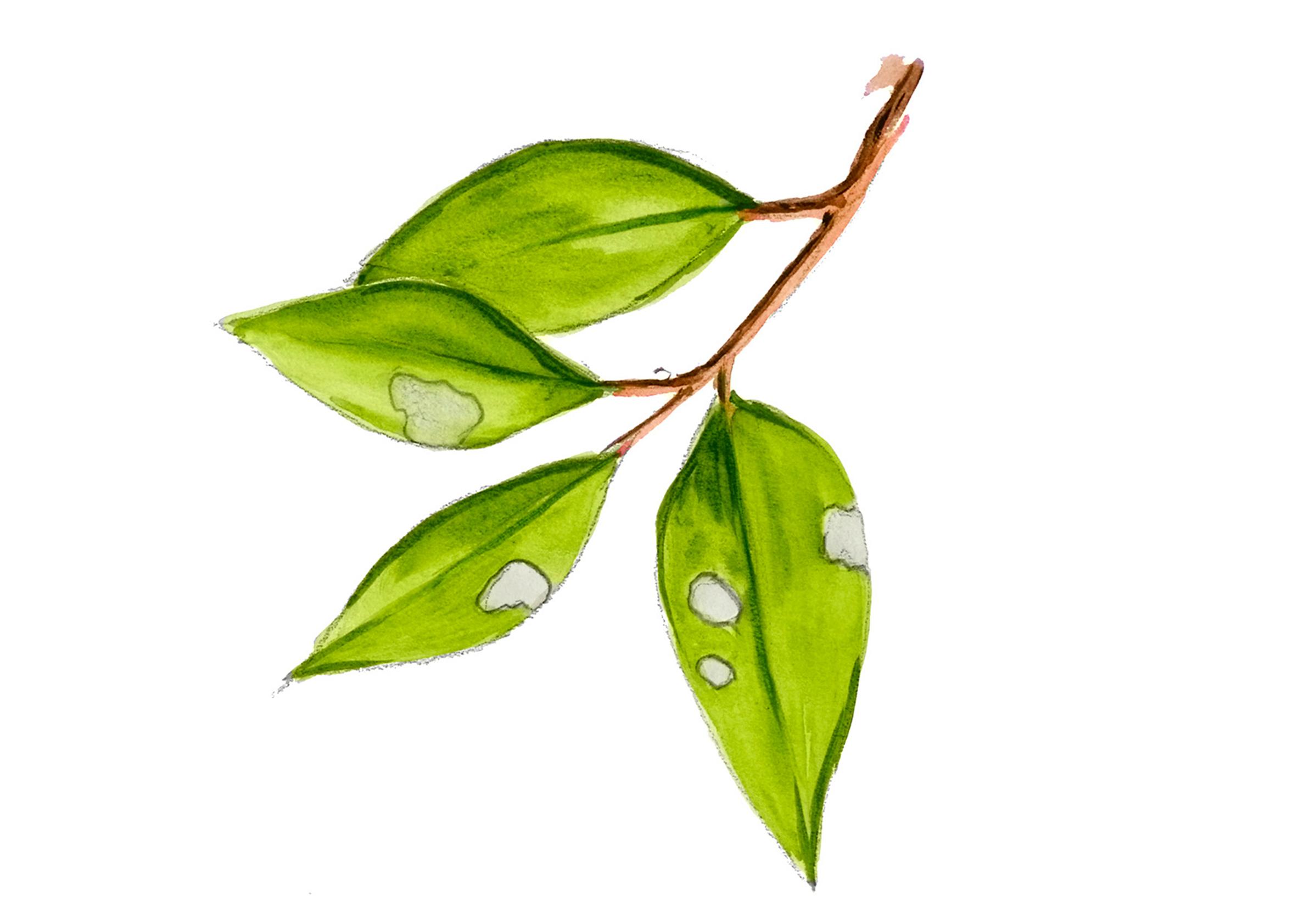
Pest control
Identifying thrips and how to control them
Mist your houseplants frequently to keep thrips away from them. Learn more about identifying thrips and protecting your indoor plants.
Identifying thrips: characteristics
- Thrips (Thysanoptera) are slender insects measuring 1–5 millimeters in length. Although adults have wings, they are poor fliers and move from plant to plant via air currents.
- The coloration of adult thrips varies from light brown to black, depending on the species.
- Thrips reproduce rapidly. A female can lay up to 60 eggs, which develop into adults in 3–4 weeks. The larvae are nearly translucent and are smaller and lighter in color than the adults. Understanding the thrips life cycle can help with prevention.
- In Finland, there are over a hundred native species of thrips, but those found on houseplants may have arrived from abroad with imported plants.
How to spot thrips damage: signs of thrips infestation
- Thrips can infest houseplants or greenhouse plants in harmful numbers. They suck plant sap and feed on pollen.
- Damage on houseplants appears as pinpoints or streak-like spots on the leaves. This thrips damage on indoor plants can become severe if left unchecked. You may also notice black, shiny excrement left in dotted lines.
- If there is extensive damage, the plant may wilt soon after symptoms appear.
Which plants are at risk of a thrip infestation?
- All herbaceous ornamental plants.
- Among woody plants, primarily species in the rose family.
- Some species of thrips are harmless to plants, and some are even beneficial predators of pests. However, it’s extremely difficult to identify different species. If a plant is not thriving and you see many thrips, it is reasonable to assume they are a pest species.
How to monitor your plants for thrips
- Thrips thrive in dry, warm indoor environments. Use a magnifying glass or loupe to monitor for them.
- Thrips are typically found hiding in blossoms and at the bases of leaf stalks.
- To help detect thrips in a greenhouse, use yellow sticky traps.
How to prevent a thrip infestation
- Inspect new plants for spots before bringing them indoors or near you other houseplants.
- Keep your plants healthy. A strong plant can combat pest spread with its own defense mechanisms.
- Increase humidity near plants by misting them frequently.
Recommended control methods: best methods for controlling thrips
- Dispose of infested plant parts or entire plants if there are many thrips.
- Spray infested leaves with water or wipe them with a damp cloth, as thrips prefer dry conditions.
- In a greenhouse, you can use biological control organisms, which are available in small packages. Insects that can be released onto plants include the minute pirate bug (Orius majusculus) and the cucumeris mite (Neoseiulus cucumeris).
- Many species of thrips are resistant to pesticides, so it is generally not recommended that you use them.
Read more:
Caring for houseplants in winter [in Finnish]
Controlling coccidae requires persistence [in Finnish]
Pests and beneficial organisms of perennials and annuals [in Finnish]
Most recent
Latest


